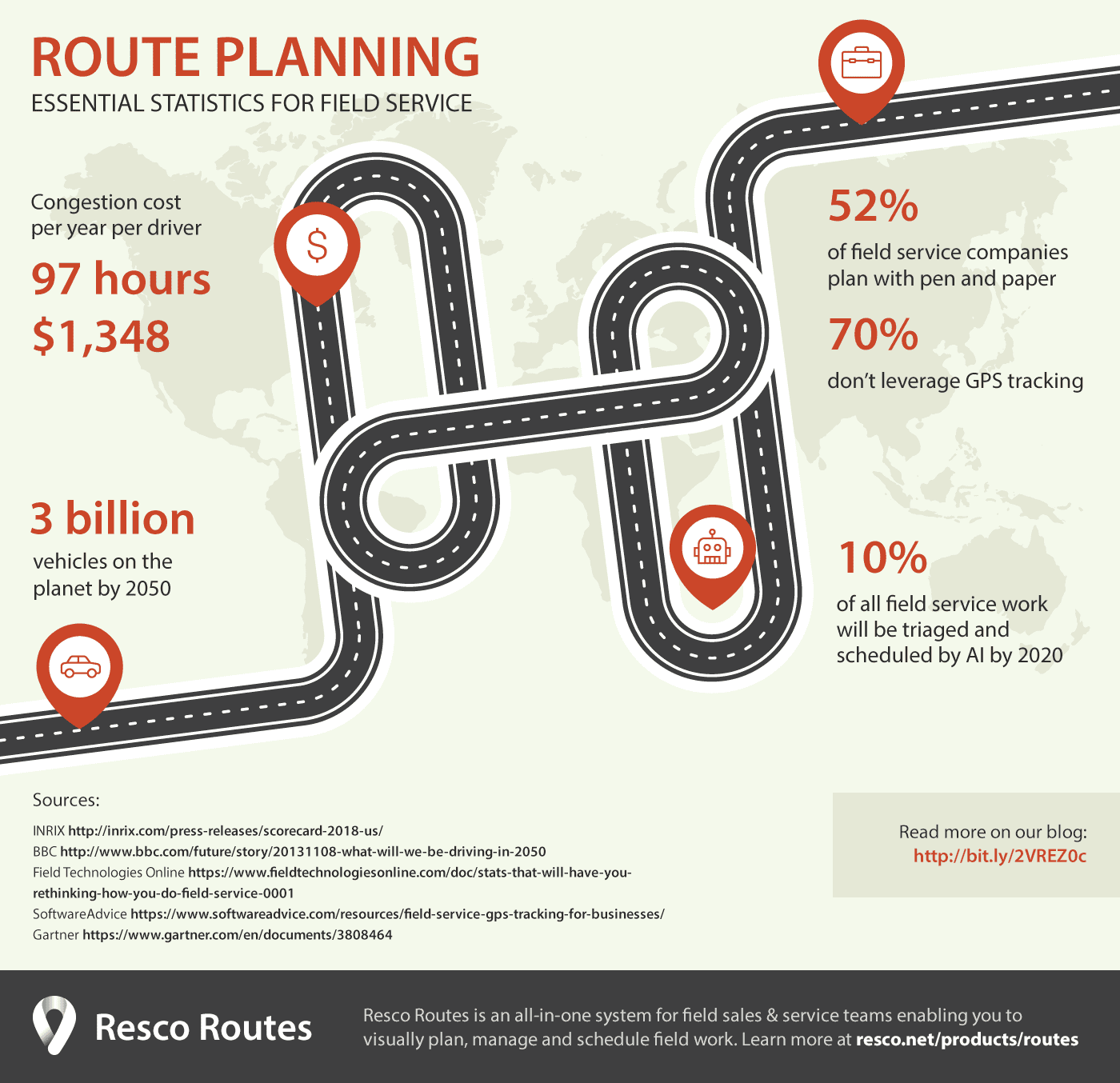If your company has assets in the field, you know costs and time efficiency need to be watched carefully. Miscalculations, traffic, roadblocks or bad weather can heavily impact time spent on the road, and therefore your monthly expenses. But what are the benchmarks? What predictions can we count on in terms of road situation, and do field service companies leverage modern digital solutions for management of their field operations? We prepared a quick overview with some essential stats.
Open image in new tab

Vehicles on the rise
Today, 55% of the world’s population lives in urban areas, a proportion that is expected to increase to 68% by 2050 (United Nations). It’s safe to assume that the number of cars in urban areas is going to increase too. More than three billion vehicles are predicted to be on the planet in 2050, compared to around one billion today, mostly because of mass-motorisation in emerging countries.
The cost of congestion
More vehicles, more congestion. According to INRIX, in 2018, congestion cost each American 97 hours and $1,348. Each year, INRIX also compiles the list of the most congested cities in the world. In top ranking cities, such as Bogota, Moscow or Los Angeles, the yearly cost is more than 200 hours.
Bad weather is especially expensive. According to Federal Highway Administration of U.S. Department of Transportation, companies lose around 32.6 billion hours each year due to weather-related congestion, and the cost of weather-related delays ranges from $2.2 billion to $3.5 billion annually. Bad weather also puts safety to the test – 21% of all vehicle crashes are weather-related.
However, there’s a silver lining. As INRIX often states in their yearly reports, congestion is usually higher in times when economy is booming.
The state of field service
Gartner predicts that 10% of all field service work will be triaged and scheduled by AI by 2020. However, 52% of field service companies still plan their operations manually with pen and paper and only 30% leverage GPS tracking (SoftwareAdvice). The disparity is understandable – not only is field service a wide field, but automation is still not a common practice, as companies battle with both affordability and missing know-how on how to implement it properly. What it all boils down to is that by facing these challenges and following industry leaders and upcoming standards, field service companies can quickly rise above their competition in the same category by being there first.
Bottom line
With more vehicles on the road each year and higher demands on the quantity and quality of work, field service companies need to consider how to digitalize and streamline their operations so that:
- They can quickly respond in case of an unpredictable situation on the road
- Scaling is possible (imagine multiple managers assigning work orders to an even bigger number of employees on paper versus with one software system)
- Easy reporting and back-tracking is available (imagine trying to figure out who was where a month ago)
- Needless time is not lost on reccurring tasks, such as manual appointment scheduling
If you think you are lacking in one or more of these points, you may be interested in Resco Routes. This all-in-one system will help you improve efficiency and spend more time where it counts by using real-time location monitoring, scheduling and timesheet management. All of that without buying extra hardware.
Resco Routes is coming on June 12, 2019. But you don’t have to remember that. If you leave us your email, we will notify you immediately after the trial becomes available.



